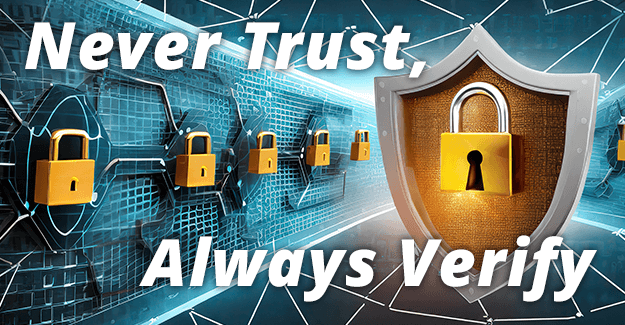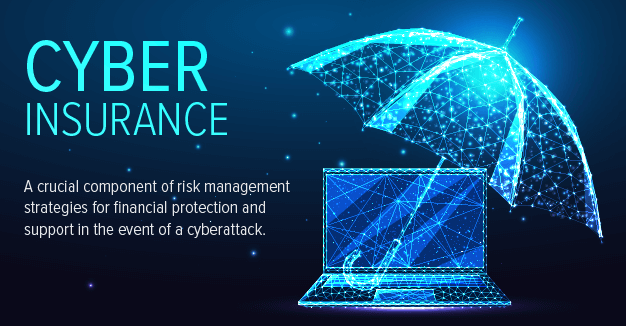Join RDI on Wednesday, Oct. 22, at 11 am to Learn the Cybersecurity Proactive Playbook to Secure Your Business
Never Trust, Always Verify: A Guide to Zero Trust Architecture
Post Date:

As cyber threats continue to rise and become increasingly more sophisticated, traditional network security models are no longer sufficient. To combat this, businesses are moving to more robust and proactive cybersecurity measures such as Zero Trust Architecture (ZTA). By shifting the security paradigm, ZTA helps organizations mitigate the risks associated with data breaches and other cyberattacks.
What is Zero Trust Architecture (ZTA)?
Zero Trust Architecture (ZTA) is an innovative approach that has gained significant traction in recent years. Unlike traditional network security models that trust everything inside the network, ZTA verifies and validates every access request, regardless of its origin. By operating on the principle of "never trust, always verify," it considers every user, device, and application is considered a potential threat, regardless of its location. ZTA’s extra verification inspection and validation ensures that only authorized entities with the necessary privileges can access sensitive data and systems.
RDI’s Layered Approach for ZTA:
- Micro-Segmentation: For critical networks, RDI may divide the network into smaller segments to limit lateral movement of threats within the environment and thus reducing the potential impact of a compromise.
- Continuous Verification: Every request for access, whether from within or outside the network, is subject to strict authentication and authorization. RDI offers platforms that constantly assesses factors such as user identity, device health, and application behavior to determine risk association.
- Least Privilege Access: RDI works with businesses to determine permission levels. Users and devices are granted only the minimum necessary permissions to perform their tasks. This limits potential damage if a security breach occurs.
- Multi-Factor Authentication (MFA): Users are required to provide multiple forms of identification, such as passwords, biometric data, or security tokens, to strengthen access control. RDI partners with industry-proven MFA solutions.
- Data-Centric Security: RDI encourages a 3-2-1 backup rule to protect critical data. By using security measures that focus on protecting data rather than the network perimeter, this practice mitigates the risks associated with cloud computing and remote work.
Benefits of ZTA for Businesses
Adopting ZTA offers numerous advantages for businesses, including:
- Enhanced Security: By eliminating the implicit trust of everything inside the network, ZTA prevents unauthorized access and lateral movement of threats. This significantly reduces the attack surface and mitigates the risk of data breaches.
- Improved Visibility: ZTA provides granular control over network access, enabling organizations to monitor and analyze user behavior and identify potential threats.
- Meet Compliance: ZTA can help businesses meet regulatory requirements and industry standards, such as GDPR and HIPAA.
- Enhanced Productivity: ZTA can streamline access processes and reduce the time spent on password management and security training.
- Improved Resilience: Using a ZTA approach to limit potential breaches and damage, organizations become more resilient to cyberattacks.
Key Factors to Consider
Implementing ZTA can be a complex endeavor, requiring careful planning, coordination, and a significant investment in resources. In addition, it often requires a cultural shift within the organization as it involves a move away from traditional security practices.
RDI is committed to a successful implementation and helps businesses easily navigate this security transition. By working with our experts, organizations can focus on their daily task while RDI handles the technical aspects of ZTA implementation to maximize the benefits.
RDI: Your Trusted ZTA Partner
To achieve a strong security posture, RDI use a layered security approach. Our team of experts tailors a ZTA strategy to meet your specific needs. We offer a comprehensive range of cybersecurity services, including:
- Network Assessments: Our experts will evaluate your existing security infrastructure and identify areas of vulnerability risk and improvement.
- ZTA Implementation: Based on your network assessment, RDI designs and deploys a tailored ZTA solution that aligns with your business needs and objectives.
- Ongoing Managed Services: Our team provides ongoing monitoring and management to ensure the effectiveness of your ZTA implementation.
By partnering with RDI, you can gain peace of mind knowing that your business is protected by a leading cybersecurity provider. Contact us today to learn more about how we can help you implement a ZTA solution that meets your unique requirements.

